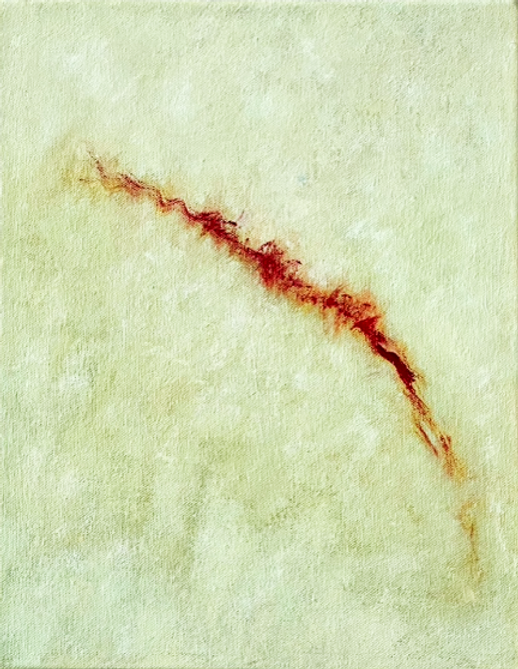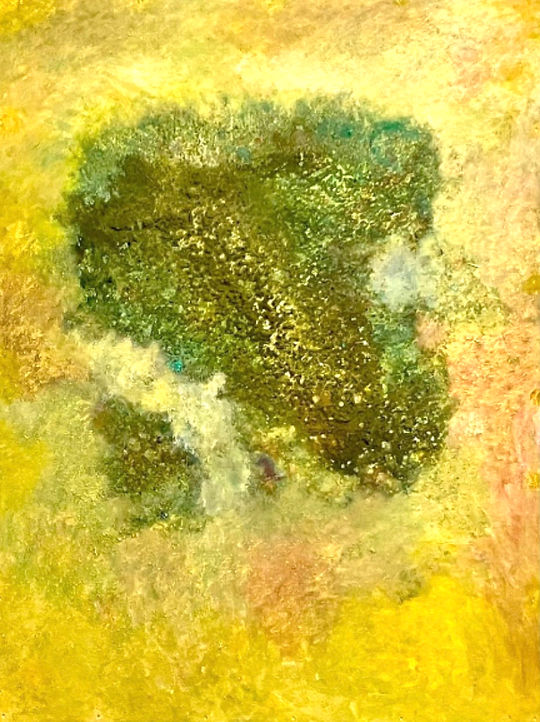
Abstract Theater
2021-2025
Creative Context
In conventional thinking, a theater is seen as a space in service of story—a container for narrative, seemingly unrelated to abstraction. Yet through its anti-narrative logic, abstract art has long claimed its place in contemporary practice, subtly altering the definition of "theater." No longer merely a vessel for story, the theater becomes a space for non-narrative experience. In this sense, the artwork itself can be understood as a kind of theater.
If modernism once imagined the artwork as a self-generating organism, I am more inclined to follow Heidegger's Dasein—the path of becoming through mortality—to understand the act of creation. Like a forest path, this creative process is full of uncertainty, but always points toward a truthful and active form of being. The artwork becomes both the process and its container, a "theater" that hosts its own becoming. This theater must not only hold itself, but also accommodate what is foreign, fragmented, and unresolved.
This theater-like process is inherently open. In some contexts, I describe it as a kind of text—a nested structure of language, space, memory, and form. Contemporary art, as I understand it, is a recursive system of embedded texts. Creation is presentation. And in that act of showing, the work interacts with its own space, with environment, with the presence of others. Thus, creation is no longer a sealed expression of inner feeling, but the construction of an open theater: a relational, dynamic field of meaning. It emphasizes dialogue, participation, and a sense of shared responsibility in art today. If an abstract work continues to activate multiple and shifting interpretations over time, it is alive—constantly evolving its own stage.
This page introduces the conceptual and visual structure of the Abstract Theater series (2021–2025), comprising three interrelated phases: A, B, and C.
Each phase reflects a shift in method, language, and metaphysical positioning within Loy Luo's abstraction.

Abstract Theater-B39,
Oil on Canvas, 11*14",
2025
1、Abstract Theater A — Breaking the Seal
Returning to abstraction is a return to the homeland of ideas.
After years of metaphysical constraint, the seal gently breaks open. Light and texture begin to flow.
This series marked my return to abstraction after a full year of figurative work during the COVID lockdown in the U.S. For me, it was a return—but for others, it marked a departure. Compared to my decade of abstract work in China prior to 2019, Abstract Theater A carries a looser, more breathing composition, less severe in tone. Only in retrospect did I realize: this was my first breath after years sealed in the strict metaphysics I had once embraced.
The trauma of the pandemic had first thrown me back into the human realm, into stories and visible forms. Only when the chaos became tolerable again could I return to geometry, to minimal traces. My metaphysical conviction remained, but now the horizon had cracked.
Abstract Theater A Series(7 pieces)
2、Abstract Theater B — Idea Falls into Form
As in Kant’s Copernican Revolution, true abstraction comes from above, not from below.
A structural, methodological process of image generation.
Series B emerged as the full articulation of the "abstract theater" concept. The flow of creation was sudden and intense—impulsive yet oddly meticulous. This shift came from a breakthrough in theory.
Over a decade of research into abstraction led me to reframe the historical philosophical basis of non-representational art. I challenged Plato's view from The Republic that art cannot express the truth of reality. On the contrary, I believe abstraction is the mode of art closest to the truth of ideas, precisely because it liberates form from material imitation.
I identified three dominant tendencies in the history of abstraction:
-
Early abstraction as stylized reduction of the visible world—still entangled with representation;
-
Mid-century formalism, where geometry and flat composition became stylistic, often subsumed by Bauhaus and design aesthetics;
-
Abstract Expressionism as a projection of subjective emotion and mysticism—frequently collapsing into excess.
The closest historical precedent to my concept of pure abstraction is Malevich's Suprematism. Yet even he did not provide a generative model for metaphysical abstraction that could evolve across cultures or sensibilities.
My second theoretical focus was to expand the methods of abstract generation. Maintaining a metaphysical origin point, I incorporated Eastern mysticism and Western existentialism into my practice, searching for deeper inner space and verticality.

Abstract Theater-B23,
Oil on Canvas, 11*14",
2025
Collected
The Abstract Theater series marked a new methodological clarity. Inspired by Kant's "Copernican Revolution," I turned abstraction away from empirical perception and toward transcendental structure. True abstraction does not emerge from visual data, but descends from the realm of ideas.
This descent is not a fall, but a soft landing of spirit into matter—a negotiation between the divine and the human. It is the core of what I call theistic existentialist abstraction: grounded in the transcendent, yet shaped by free will, bodily motion, and material interaction.
Each work in Abstract Theater is a vessel for that descent—a seed of the metaphysical falling into lived experience, absorbing heat from human feeling, rooting itself in the infinite potential of the visible world, and continuing to grow through the unseen gaze of its audience.
Abstract Theater B Series(40 pieces)
3、Abstract Theater C — Totemic Memory and Cultural Emergence
Image returns to deep memory. Bloodlines reappear through abstraction.
A symbol is not a sign—it is a world being summoned again.
Series C evolved naturally from Series B. The imagery began to lean toward ancestral forms, echoing ancient totems. This led me to a deeper engagement with primal visual memory—and eventually gave rise to the series Word: Before the Word, marking the beginning of a new phase of cultural excavation through image.
Abstract Theater C Series(12 pieces)
Critical Note
In the “Abstract Theater” series, Loy Luo reclaims abstraction as an ontological method—neither pure emotion nor rigid formalism, but a mode of visual thinking rooted in metaphysical descent. This is not abstraction as an expressive veil or symbolic system. Rather, it is abstraction as a generative space: a theater where form is not staged but unfolds, not represented but enacted.
Drawing from Heidegger’s existential pathway and Kant’s epistemological revolution, Luo’s works are not constructed through perception, but descend from pre-perceptual ideas. They do not aim to resemble the world, but to generate inner worlds that hold weight. Each painting is less a window, more a vessel—one that receives and reconfigures the tension between transcendence and human agency.
The term “theater” is not metaphorical here. Luo treats the surface not as a flat aesthetic field, but as a site of relational dynamics: between idea and image, between structure and improvisation, between cultural memory and existential insistence. In this context, the viewer is not a spectator, but a participant in the metaphysical activation of form.
Rather than resisting meaning, Luo’s abstraction invites layered resonance. Texture becomes syntax; silence, a rhythm. In a time when abstraction risks collapsing into stylistic repetition or empty gesture, Luo proposes an alternate path: abstraction as construction—not of illusion, but of inner ontologies.
Written by Chong, 2025
Curatorial Note from the artist’s theoretical perspective

Abstract Theater-A7,
Mixed Media, 36*48",
2021-2024
Want to learn more about the exhibition planning? Please contact us or download the full proposal PDF.














































